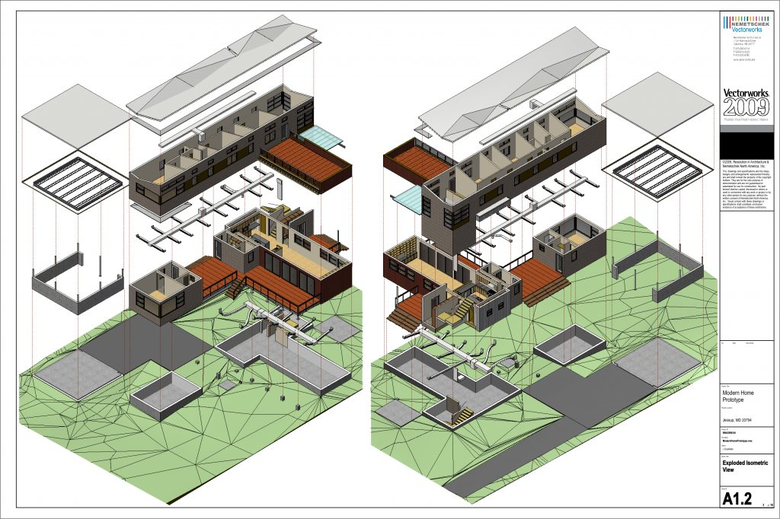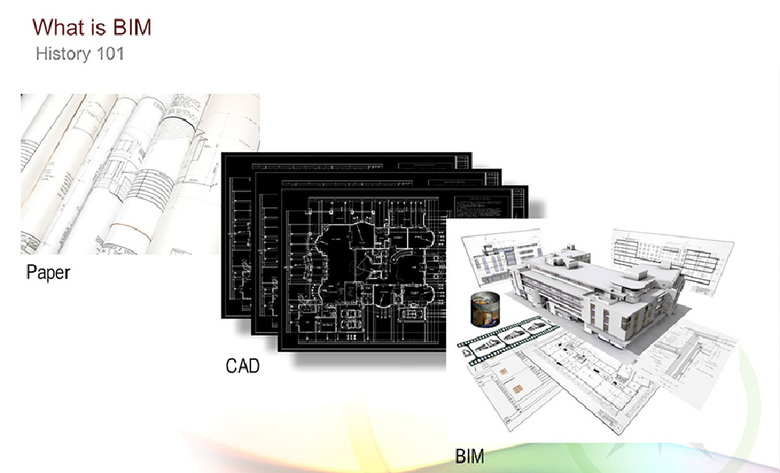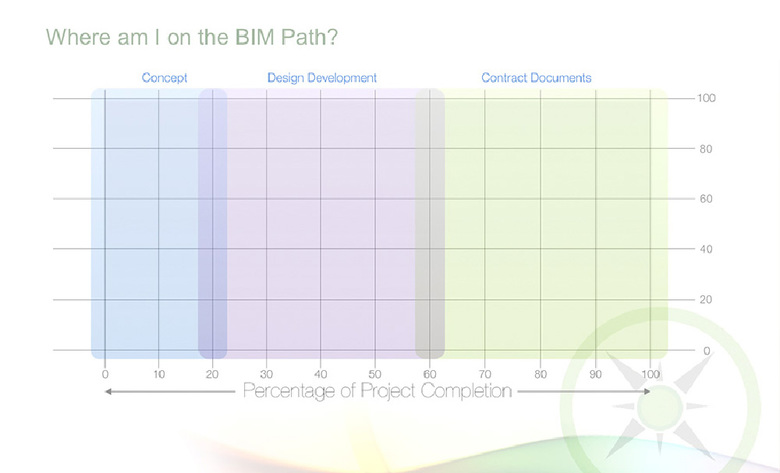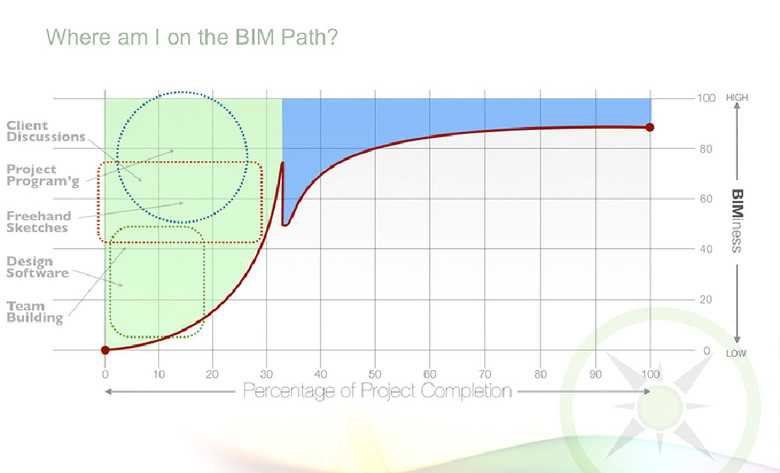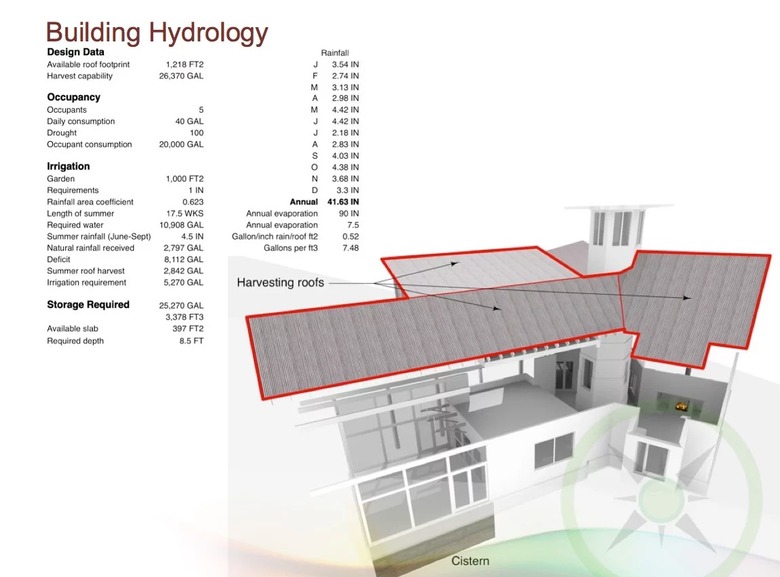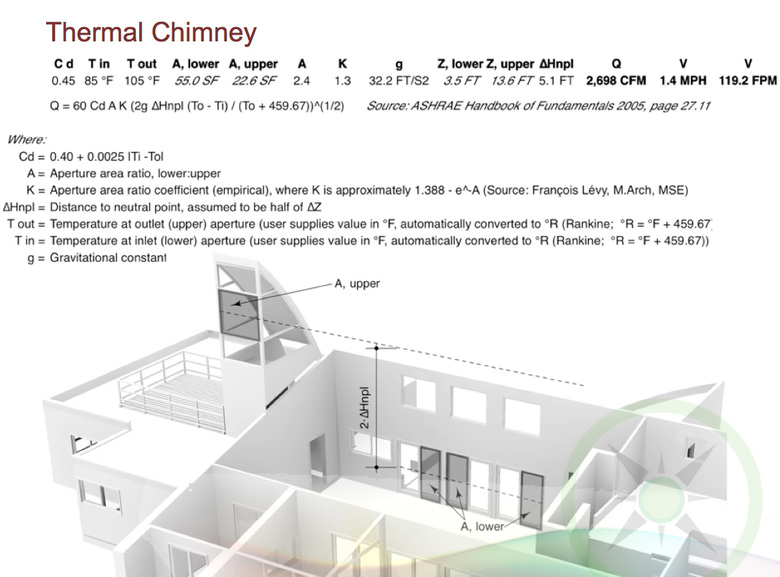BIM in 10 Lessons
John Hill
25. February 2013
Image courtesy of Nemetschek Vectorworks, Inc.
In December World-Architects attended a BIM Boot Camp organized by Nemetschek Vectorworks. The increasingly important topic of Building Information Modeling (BIM) was tackled across seven presentations in nine hours, ranging from basic definitions of BIM to in-depth case studies. This article presents some of the lessons learned during the BIM Boot Camp.
1. Defining BIM
BIM is one of today's big architectural buzz terms, like sustainability or infrastructure, so it's worth defining it precisely before determining its uses and impact. One way is to define what it is not: BIM is not hand drawing, and BIM is not computer drafting (CAD). BIM is part of an evolution from drawing on paper to drafting on the computer (image below), but it breaks from those conventions where plans, sections, elevations, perspectives, and other 2- and 3-dimensionsion drawings were created through the articulation of lines.
BIM, as a Building Information Model (the distinction between Model and Modeling will be apparent soon) is a 3-dimensional digital representation of a building from which the plans, sections, elevations, perspectives, spreadsheets, and other output useful to the realization of a design are created. Or as Rubina R. Siddiqui of Nemetschek Vectorworks put it in her presentation: "BIM is a digital representation of a building that can be queried for information" (her emphasis). This ability arises from modeling with objects or systems (walls, doors, windows that "know" what they are and where they are in the model) rather than lines, and because these objects contain data.
Image courtesy of Nemetschek Vectorworks, Inc.
2. Little BIM and Big BIM
The data-rich digital model that is created is referred to as Little BIM, or Building Information Model. Various architects on a team work on this single model, and it is often shared with consultants (see collaboration, later). Therefore Little BIM uses the technology to realize a project, just as a set of drawings and specifications developed by hand or CAD worked toward the goal of a finished building.
Big BIM refers to Building Information Modeling and is, to use words from Siddiqui's presentation again, "the process of generating and managing building data during its life cycle." Adding those three letters to Model extends the reach of the technology to the user and even more collaborators, rolling in legal issues (more on that later) but enabling more value to be extracted from the data embedded within the model. To put it another way, the model moves from a tool for realization to a virtual representation of the building post-occupancy. The GSA (U.S. General Services Administration) is one client that actually requires BIM to aid in the operations of its buildings (what is often referred to as IPD—Integrated Project Delivery), something that will be increasingly common with more adoption of the technology.
Image courtesy of François Lévy
3. BIM Software
So what piece of software should an architect use to take best advantage of BIM? The short answer is "not just one." To start, each of the three main BIM applications geared to architects—ArchiCAD, Revit, and Vectorworks—has features and limitations that may make it the primary one for an architect, but a combination of applications is more likely the norm. Depending on the complexity of a design, another piece of software may be used in the conceptual design phase to create a model imported into a BIM application. In later phases, other pieces of software may be used to analyze the data in a BIM model for energy modeling, construction sequencing, or other uses. Not surprisingly, issues of interoperability come to the fore with so many pieces of software being used by different players, something that led to the development of Open BIM.
Image courtesy of Nemetschek Vectorworks, Inc.
4. Open BIM
Open BIM, a program of buildingSMART, "is a universal approach to the collaborative design, realization and operation of buildings based on open standards and workflows." This collaboration across platforms happens via the IFC (Industry Foundation Classes) file format, an open-source standard that Graphisoft, Autodesk, Nemetschek and other software vendors support. Open BIM is based on the fact that BIM is ultimately a collaborative tool, regardless if it's used as Little BIM or Big BIM. The ability to share data-rich models across disciplines makes IFC the architectural equivalent of HTML, opening up some legal issues but also freeing architects, consultants, users, and other players from being tied to one vendor or platform.
Image courtesy of Nemetschek Vectorworks, Inc.
5. BIM as Process
Even with a definition of BIM and its application to little and big scenarios, it can still be confusing to determine if BIM is a product or a process. The answer is "yes/and" rather than "either/or," meaning that the software and model are inserted into a larger process that involves numerous other ways of envisioning information and realizing it, from pen and paper to bricks and mortar.
Steve Alden, of Nemetschek Vectorworks, tackled BIM as a process in a presentation that was frank in its skepticism toward the technology as an appropriate design tool. With the typical SD/DD/CD framework (fourth image) as a base grid, he illustrated the move from human craftsmanship to machine craftsmanship (image above), from hand sketches to the execution of the design via construction documents. Within the latter is where he found BIM being used by architects, but the area in between Schematic Design and CDs is where the technology's greatest potential can be found.
Image courtesy of Nemetschek Vectorworks, Inc.
6. Happy BIM
Alden found what he called "reasonably happy BIM" in the Design Development zone between concept and execution. This is the realm of Open BIM, what he charts in the image above with a slight hiccup in the transition between the human and the machine. But note how differences in the arcs in the early phases of the two charts above: Happy BIM allows for more time and effort to be expended in the early phases of a project, where many of the design decisions are made. As illustrated, this part of the process involves programming, sketching, team building, and client discussions, but also design software, such that BIM can also play a greater role in the formation of a design.
7. Know Your LODs
François Lévy is an architect from Austin, Texas, who embraces BIM as a Schematic Design tool. He spoke during the BIM Boot Camp about the use of BIM in the design of "skin-dominated buildings," much of it culled from his 2011 book BIM in Small-Scale Sustainable Design. Since BIM is a technology embedded with highly specific data, many architects shy away from using it in the early phases of a project when materials, systems, and other considerations are not ready to be determined. But when considered in various shades of LOD (Levels of Detail), then the intelligent functioning of BIM can be extended.
Pictured here are LOD 100, what Lévy calls "the digital version of a foam-core model"; LOD 200, consisting of more detail with wall assemblies, windows, and so forth; and LOD 300, consisting of even more detail extending to a building's interiors. (LOD 400 and LOD 500 respectively deal with construction details and as-constructed assemblies, falling well beyond the SD and DD portions of a project.)
Image courtesy of François Lévy
8. Small Green BIM
Austin is home to the United States' first comprehensive sustainable building program, Austin Energy Green Building Program (it turned 20 in 2011), so it's no surprise that Lévy focuses on the application of BIM to sustainable design. With an emphasis on single-family houses and other small buildings, the measure of a project's sustainability is found in its exterior walls (daylighting, ventilation, assemblies, etc.) more than its services, the purview of larger buildings. This means that site analysis, rainwater collection, sun shading, passive heating/cooling, and other considerations can be tested even with LOD 100 models.
Lévy's use of BIM echoes Alden's ideas of integrating the technology in earlier phases of a project to achieve "reasonably happy BIM." Their approaches don't limit architects to designing within a BIM environment; if anything they add a tool to a designer's arsenal. Sketches, physical models, and other output can be quickly realized in BIM's digital realm where they can then be made intelligent toward various ends.
Image courtesy of François Lévy
9. Legal Issues
While BIM and IFC offer great potential for architects, their collaborators, and owners, they also raise a number of legal questions, such as "who owns the model?" and "who is responsible for errors in the collaborative process?" Traditionally architects' intellectual property is tied to the drawings they produce for a project. File-sharing with consultants, contractors, and owners is easier with CAD, but that still deals with drawings.
BIM models and the data they carry are something else entirely, forcing the AIA to create the E202 BIM Protocol in 2008. Attorney Robert F. Herrmann asserts in the 2012 book Law for Architects that the AIA agreement addresses some of the concerns, but an architect must make sure that their individual issues and concerns are addressed in whatever agreement is used. With architects, consultants, contractors, manufacturers, owners, and lawyers involved, an agreement can be tricky but necessary for a truly collaborative project and process.
Video courtesy of Nemetschek.
10. Coordination
Which brings us to collaboration, the current holy grail in adopting BIM. Increased productivity had been promoted in BIM's infancy, but with the rise of IPD and Big BIM collaboration is increasingly important. Each of the points above touches upon how architects collaborate with others through a BIM model. This short video illustrates one way that BIM collaboration works: The architect, manufacturer, and contractor are linked in a process rooted in the model's intelligence.
These lessons from Nemetschek Vectorworks' BIM Boot Camp may not be comprehensive (those interested should attend one or a similar presentation for a more detailed picture), but they touch upon the myriad issues swirling around the adoption of BIM into an office and its workflow. Every office will have varying success with using BIM, but the industry's efforts in dealing with the technology means it is just a matter of time before BIM becomes a major part of the process.
Related articles
-
Spotlight on Italy
on 5/16/18
-
Bologna Shoah Memorial
on 7/20/15
